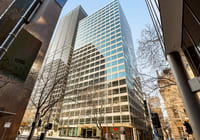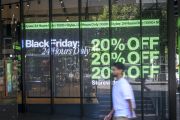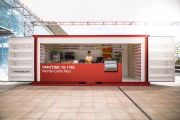
Get ready to pay more: The future of online shopping costs
Australia’s growing shortage of industrial land threatens to increase online shopping costs and lengthen shipping times, a leading industry organisation has warned.
More warehouse-ready sites need to come into the supply pipeline to avoid what could be an imminent logistics crisis, according to the Property Council of Australia (PCA).
“We have $1.2 trillion worth of goods flowing through Australia’s industrial and logistics sector and that’s obviously important because when Australians buy something online – they could be groceries, appliances or medicines coming in from local and overseas manufacturers – these industrial facilities do the work of processing and delivering the orders,” explains Matthew Kandelaars, PCA group executive, policy and advocacy.
“So the limited space can lead to longer delivery times, but also increased rents and that flows through to increased costs for consumers and businesses who use these facilities.”
The latest industrial vacancy rate figures, reported by commercial real estate firm CBRE in June this year, stood at 2.8 per cent nationally, having fallen in all states except Perth.
The availability of industrial land will remain constrained into 2026, the report predicted.
When combined with the strong expansion of e-commerce across the country, this could pose a difficult problem for state and local governments, Kandelaars says.
“We’ve got supply-side pressure, so we need more industrial land zoned ‘serviced industrial land’ right across the nation, and there’s also demand-side pressure because the rise and rise of online shopping and fulfilment centres has increased substantially – exponentially – since COVID and will only continue to increase as we move forward,” he says.
“It is really critical that the availability of serviced and zoned industrial land is fast-tracked. So we need clear plans from governments on how they will deliver the critical infrastructure to enable the growth of industrial land.”
Despite the scarcity, significant land deals have been struck in recent months, including the 15.4-hectare site near Brisbane Airport, which was bought for $61.3 million by investment manager Centennial and global real estate group Phoenix Property Investors.
The site will become a multi-tenant industrial and logistics estate with a projected end value of $240 million.
Knight Frank is also handling the sale of 60 hectares in the second stage of land releases at BrisWest in Ipswich.
The growth of brands like Amazon, which has just opened its 12th Australian facility at Chullora, Western Sydney, as well as the expansion of homegrown companies like Coles and Bunnings, is fuelling competitive land prices.
This has made the market a profitable place for investors, with returns at 3.3 per cent in the March quarter, data from KPMG shows.
Population growth across Australia is another strong driver of demand for industrial land, and perhaps nowhere more so than in Brisbane.
“Population growth has been pretty extraordinary here and the Olympics have created a real buzz and a lot of activity,” says Mark Clifford, Knight Frank partner and head of industrial logistics Queensland.
“There’s a lot of different businesses being attracted to Brisbane now to set up shop generally. And with more people moving here, it means more warehousing needed, which puts strain on land supplies.”
If not remedied in the next five years, the shortage of industrial sites would present a real problem for everyday Australian consumers, Clifford says.
“There’s only a very small amount of serviced industrial land left to cater for future growth,” he says.
“What’s been highlighted is that the governments and the councils have to activate in conjunction with key private players and businesses to make sure there is enough room for some of the bigger groups to get out there and build facilities.”










